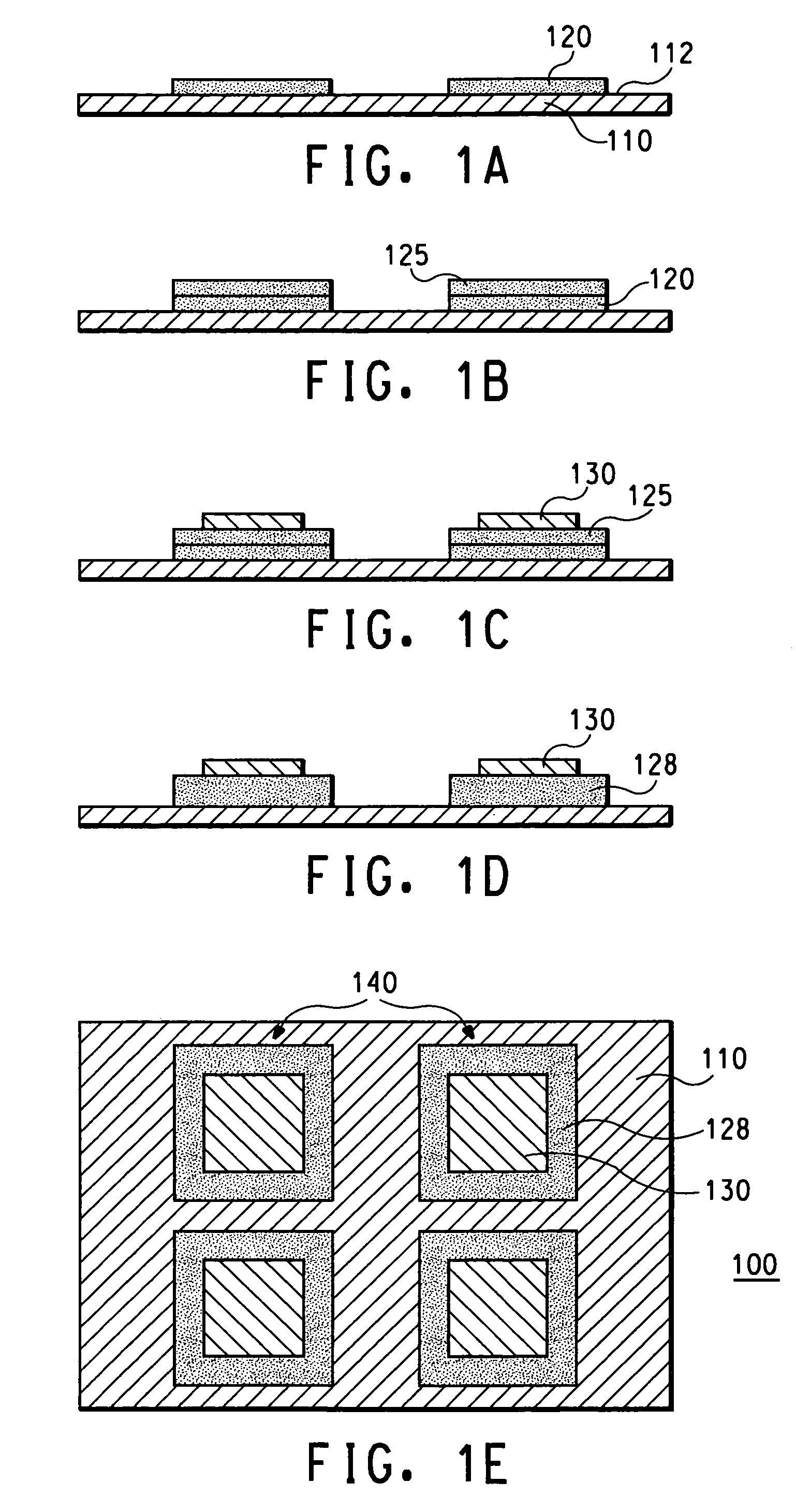Co-fired ceramic capacitor and method for forming ceramic capacitors for use in printed wiring boards
a ceramic capacitor and co-fired technology, applied in the manufacture of capacitors, fixed capacitor details, feed-through capacitors, etc., can solve the problems of low electrode stress, glass-ceramic does not re-soften and flow, and the surface of glass-ceramic is often difficult to adhere, so as to increase the capacitance density
- Summary
- Abstract
- Description
- Claims
- Application Information
AI Technical Summary
Benefits of technology
Problems solved by technology
Method used
Image
Examples
example 1
[0051]Referring to FIGS. 1A–1E, a specific embodiment of the capacitor structure 100 was described. In this embodiment, the foil 110 was a copper foil. The type of copper foil 110 can be any commercial grade of copper foil used in the printed wiring board industry, and may be in the range of ⅓ oz copper foil (approximately 12 microns thickness) to 1 oz copper foil (approximately 36 microns thickness). The copper foil 110 was pretreated by applying a copper underprint paste over selected areas of the foil 110. The resulting product was then fired in nitrogen at 900° C. for 10 minutes at peak temperature, with a total cycle time of approximately 1 hour, forming the underprint 112.
[0052]In FIG. 1B, a thick-film dielectric ink was screen-printed onto the pretreated copper foil 110 through 400 mesh screen to create a pattern of ½ inch by ½ inch first dielectric layers 120. The wet printed thickness of the first dielectric layers 120 is approximately 12–15 microns. The first dielectric la...
example 2
[0063]A process as described in Example 1 was repeated, except that the thick-film dielectric 128 was printed through 325 mesh screen, with a wet thickness of each of the two layers of approximately 15–20 microns. Results were similar to the embodiment of Example 1, except that the capacitance density was approximately 120 nF / inch2.
example 3
[0064]A process as described in Example 2 was repeated using a variety of dielectric and electrode dimensions shown in the table below:
[0065]
Dielectric Size milsElectrode Size mils250 × 250210 × 210 56 × 340 40 × 320176 × 340160 × 320 96 × 180 80 × 158 26 × 180 10 × 159176 × 180160 × 15836 × 9820 × 77 56 × 10040 × 78176 × 100160 × 78 36 × 5820 × 3796 × 6080 × 3836 × 3816 × 1726 × 3010 × 9 26 × 340 10 × 31890 × 9070 × 70330 × 330310 × 310119.5 × 119.5109.5 × 109.5 36 × 338 20 × 320 96 × 340 80 × 320 36 × 178 20 × 157336 × 180320 × 158 56 × 180 40 × 158 26 × 10010 × 74 56 × 10040 × 78 96 × 10080 × 7826 × 6010 × 3956 × 6040 × 3826 × 4010 × 1856 × 4040 × 1836 × 2820 × 7 336 × 340320 × 318170 × 170150 × 150240 × 240229.5 × 229.5
[0066]Capacitance in these embodiments was proportional to the area of the printed copper electrode, but the calculated capacitance densities were essentially identical to that of Example 1.
PUM
| Property | Measurement | Unit |
|---|---|---|
| thickness | aaaaa | aaaaa |
| thickness | aaaaa | aaaaa |
| thickness | aaaaa | aaaaa |
Abstract
Description
Claims
Application Information
 Login to View More
Login to View More - R&D
- Intellectual Property
- Life Sciences
- Materials
- Tech Scout
- Unparalleled Data Quality
- Higher Quality Content
- 60% Fewer Hallucinations
Browse by: Latest US Patents, China's latest patents, Technical Efficacy Thesaurus, Application Domain, Technology Topic, Popular Technical Reports.
© 2025 PatSnap. All rights reserved.Legal|Privacy policy|Modern Slavery Act Transparency Statement|Sitemap|About US| Contact US: help@patsnap.com



